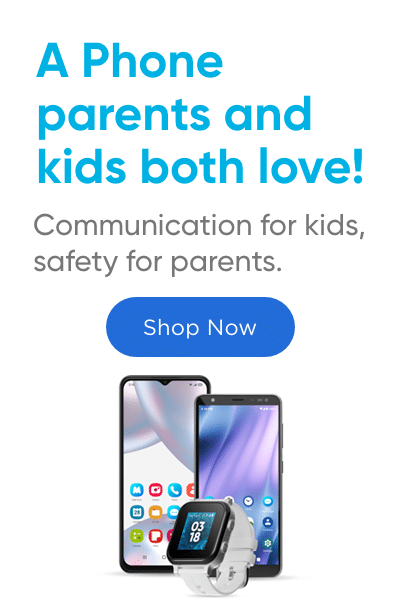How to Avoid Inappropriate Content
JAN 15, 2021
How to Avoid Inappropriate Content
When a kid gets their first smartphone, they hold a lot of power in their hands (literally) and may struggle with knowing how to avoid inappropriate content. From picture messaging to surfing the internet, many devices put the world’s content at their fingertips.
The internet is full of enriching, educational content. Unfortunately, it’s home to almost as much risky, dangerous content. From pornography to misinformation to hate speech, there’s a lot that isn’t appropriate for children.
As a parent, you’re right to worry. But you also hold power in your hands. You can choose a safe phone for your kids. You can share the signs of inappropriate content. And if they do stumble on it, you can have an open conversation.
Don’t be overbearing, but do keep an eye out.
Here’s 5 tips for knowing how to avoid inappropriate content:
1. Know What Online Bullying Looks Like
Depending on the kids phone you choose, your kids may have access to social media apps. A 2018 survey of children’s online behavior found that about 60% of kids who use social media have witnessed some form of bullying. Do you want your kid to be a part of that statistic? One option is to get a safe phone for kids like our Gabb Phone™.
Or, you can do more research into understanding what cyberbullying looks like and knowing when to take action is important for your child’s wellbeing. If you notice any of these signs, your kid might be getting cyberbullied without your knowledge:
- They lose interest in technology
- They have anxiety when receiving a phone notification
- They’re uneasy about going to school
- They withdraw from friends and family
- They show signs of chronic stress (headache, upset stomach)
- They engage in self-destructive behavior
If you notice any of these things in your kid, ask to review your child’s social media content together. They could have fallen victim to cyberbullying and think it’s how normal online relationships work.
2. Talk Through Text Messages
Text messaging is another way kids may encounter risky or harmful content. Predators often “groom” children in ways that seem friendly at first but can become dangerous quickly.
When a kid has the ability to text, there is a whole world of inappropriate content they can be exposed to. According to FBI data, more than 50% of victims of online sexual exploitation are 12 to 15 years old. Predators may see younger kids as even easier victims.
To be safe, ask your kid the following questions:
- Has someone ever sent you a message that made you feel uncomfortable?
- What sorts of messages would you share with a trusted adult?
- Have you thought about how sending something you shouldn’t could affect your future?
Asking your child these questions can help jog their memory of all the messages they’ve ever sent or received that could potentially be seen as harmful. Bringing awareness to this and having an honest conversation will limit the amount of inappropriate messaging in the future.
3. Discuss Where Adult Content Hides
When your kid gets their first smartphone, one of your biggest fears might be that they’ll be exposed to pornographic content. Even if you’re sure your kid isn’t searching for it on their own, how can you be sure they’re not being targeted by it?
You’d be surprised by how much porn culture targets children nowadays. Kids may encounter pornography through livestream gaming, exploring the dark web, and even on streaming sites like HBO Go and Prime.
Porn sites aren’t the only problem. Make sure your child steers clear of other places where they may encounter adult images and videos.
4. Create Healthy Suspicion Around Online Relationships
One great thing about the internet is that it allows us to forge relationships with people all across the world. But the reality is, not everyone is who they claim to be online.
Kids usually connect with people online who make them feel comfortable. Sometimes, those are people trying to take advantage of them. Make clear that your son or daughter shouldn’t assume good intentions with people they only know online.
Counter this by promoting real relationships. Not only are they safer than online ones, but they build empathy and provide a sense of fulfillment.
Also, ask that they implement strict privacy settings on their online accounts. They should know to never share personal information, such as their street address or date of birth. Above all, they should never accept invitations from strangers to meet up in the real world.
5. Encourage Positive Content
With knowing how to avoid inappropriate content, simply avoiding dangerous content isn’t enough. Your son or daughter should actively seek out safe, educational content when he or she gets online.
Ask your child what digital games they like to play. Instead of mindless apps and silly videos, encourage your kids to download those that are actually beneficial to their health. Apps like Duolingo can help them learn a foreign language. Quick Maths gamifies mathematical and computer science content.
It might not seem like it sometimes, but your kids do listen to you. Invest in devices that keep them safe, but don’t assume the right kid’s phone is enough. The best defense against risky content is a caring, helpful parent.












Success!
Your comment has been submitted for review! We will notify you when it has been approved and posted!
Thank you!